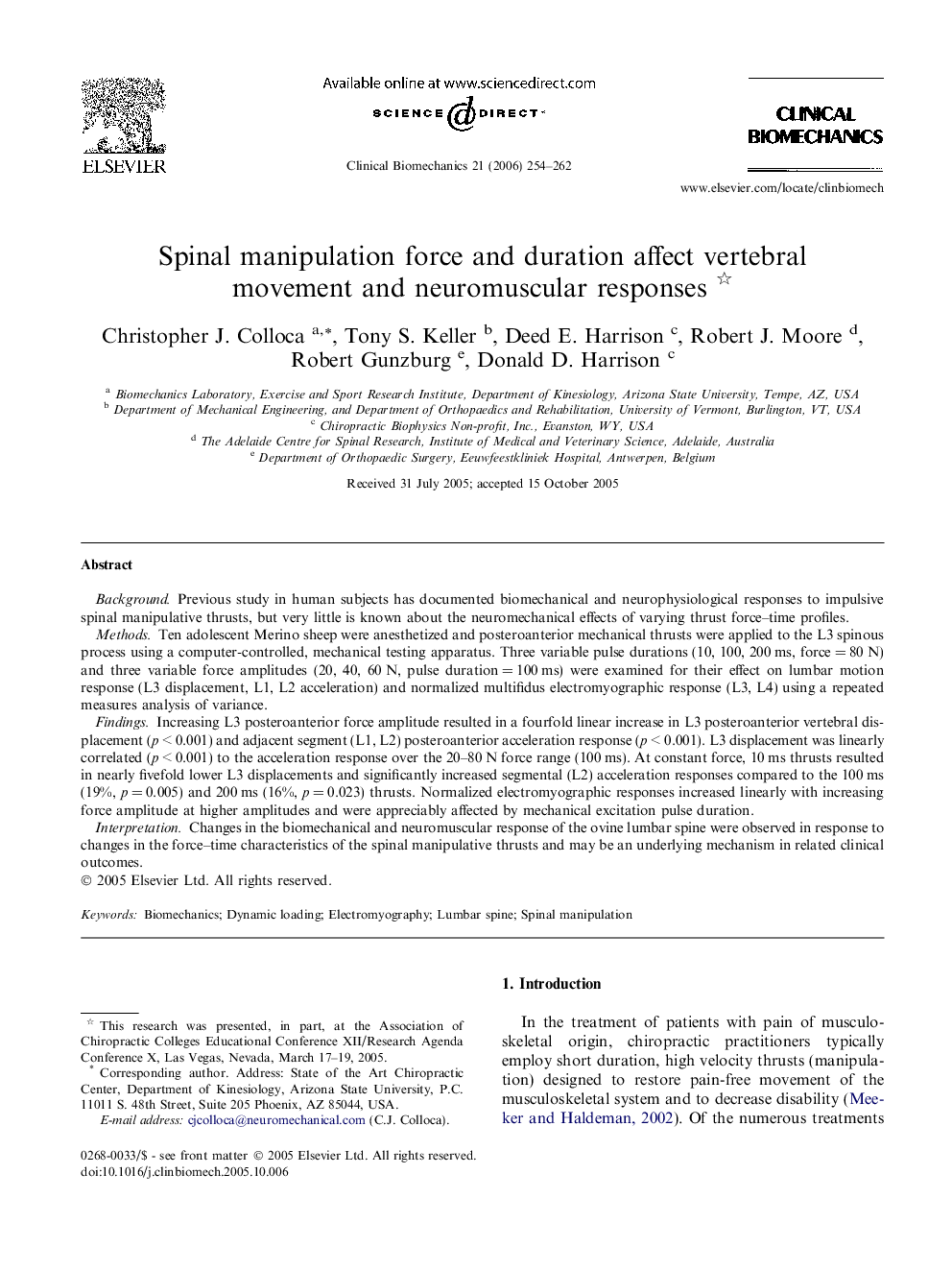| Article ID | Journal | Published Year | Pages | File Type |
|---|---|---|---|---|
| 4051650 | Clinical Biomechanics | 2006 | 9 Pages |
BackgroundPrevious study in human subjects has documented biomechanical and neurophysiological responses to impulsive spinal manipulative thrusts, but very little is known about the neuromechanical effects of varying thrust force–time profiles.MethodsTen adolescent Merino sheep were anesthetized and posteroanterior mechanical thrusts were applied to the L3 spinous process using a computer-controlled, mechanical testing apparatus. Three variable pulse durations (10, 100, 200 ms, force = 80 N) and three variable force amplitudes (20, 40, 60 N, pulse duration = 100 ms) were examined for their effect on lumbar motion response (L3 displacement, L1, L2 acceleration) and normalized multifidus electromyographic response (L3, L4) using a repeated measures analysis of variance.FindingsIncreasing L3 posteroanterior force amplitude resulted in a fourfold linear increase in L3 posteroanterior vertebral displacement (p < 0.001) and adjacent segment (L1, L2) posteroanterior acceleration response (p < 0.001). L3 displacement was linearly correlated (p < 0.001) to the acceleration response over the 20–80 N force range (100 ms). At constant force, 10 ms thrusts resulted in nearly fivefold lower L3 displacements and significantly increased segmental (L2) acceleration responses compared to the 100 ms (19%, p = 0.005) and 200 ms (16%, p = 0.023) thrusts. Normalized electromyographic responses increased linearly with increasing force amplitude at higher amplitudes and were appreciably affected by mechanical excitation pulse duration.InterpretationChanges in the biomechanical and neuromuscular response of the ovine lumbar spine were observed in response to changes in the force–time characteristics of the spinal manipulative thrusts and may be an underlying mechanism in related clinical outcomes.
